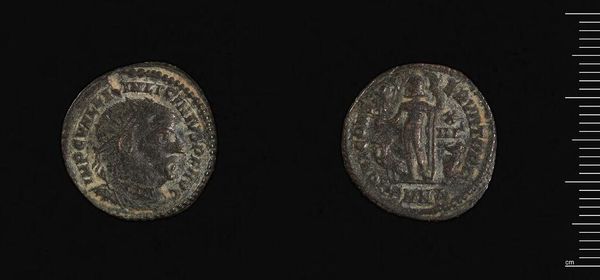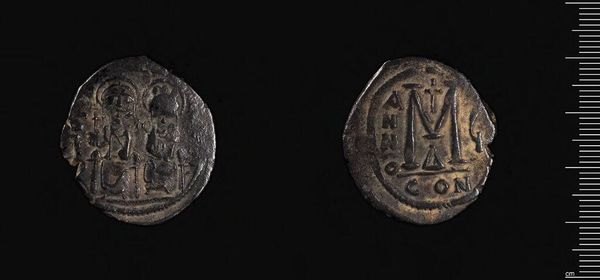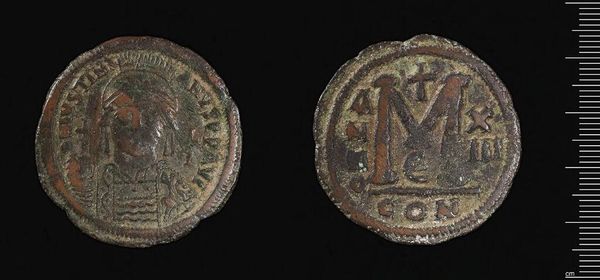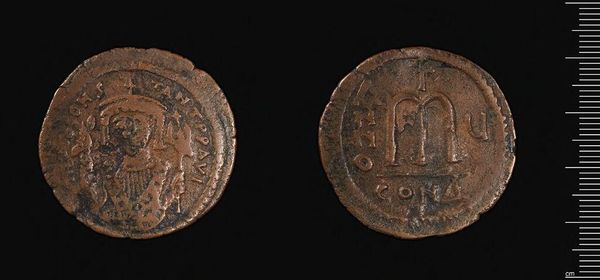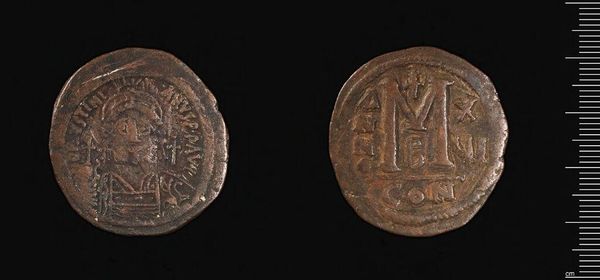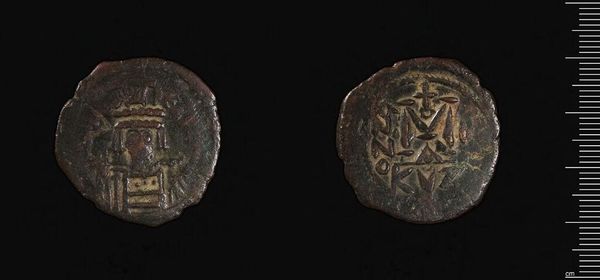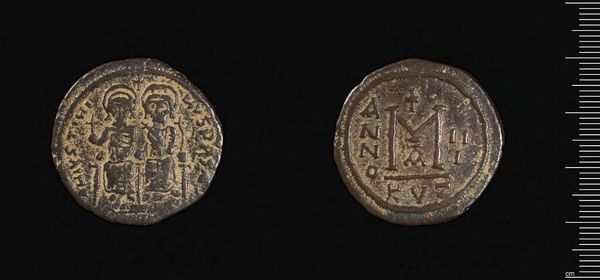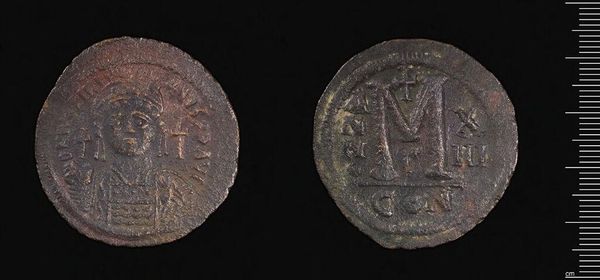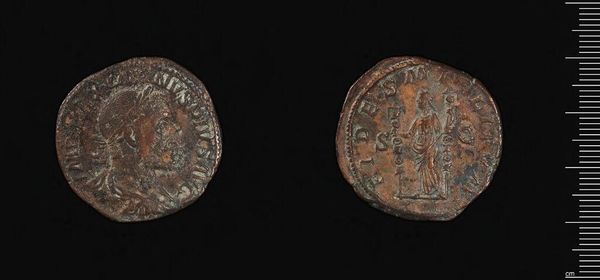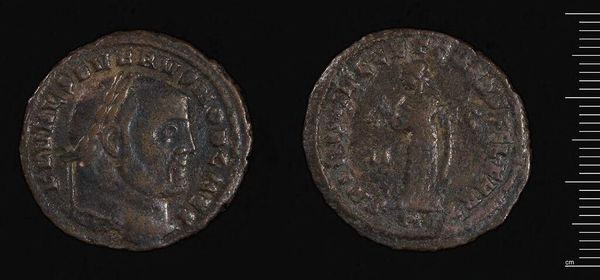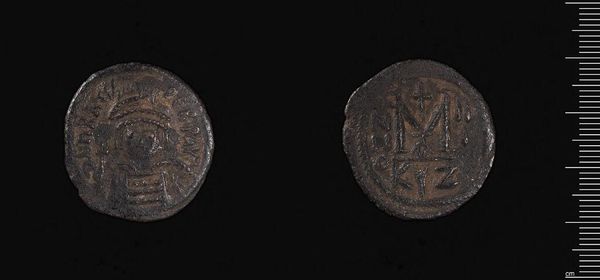
Coin of Maurice Tiberius c. 589 - 590
Dimensions: 12.13 g
Copyright: CC0 1.0
This is a coin of Maurice Tiberius, likely made during his reign in the late 6th century. Cast in bronze, it is a mundane material elevated by careful making. Coins like this were produced through a labor-intensive process. First, a master die would have been engraved, a highly skilled job. Then, molten bronze was poured into molds made from this die. Even with this semi-mechanized approach, each coin would need individual attention. The rough edges would need to be trimmed, and each coin would have to be checked for flaws. It may be tempting to dismiss this object as just a piece of currency, but coins also carry immense social weight. This coin would have been circulated widely, each transaction a silent assertion of Tiberius’s power. The very act of holding this coin would have been a small participation in the Byzantine economy, and by extension, its political system. Ultimately, understanding the coin means recognizing the convergence of material, labor, and social context, reminding us that even the smallest object can tell a grand story.
Comments
No comments
Be the first to comment and join the conversation on the ultimate creative platform.

